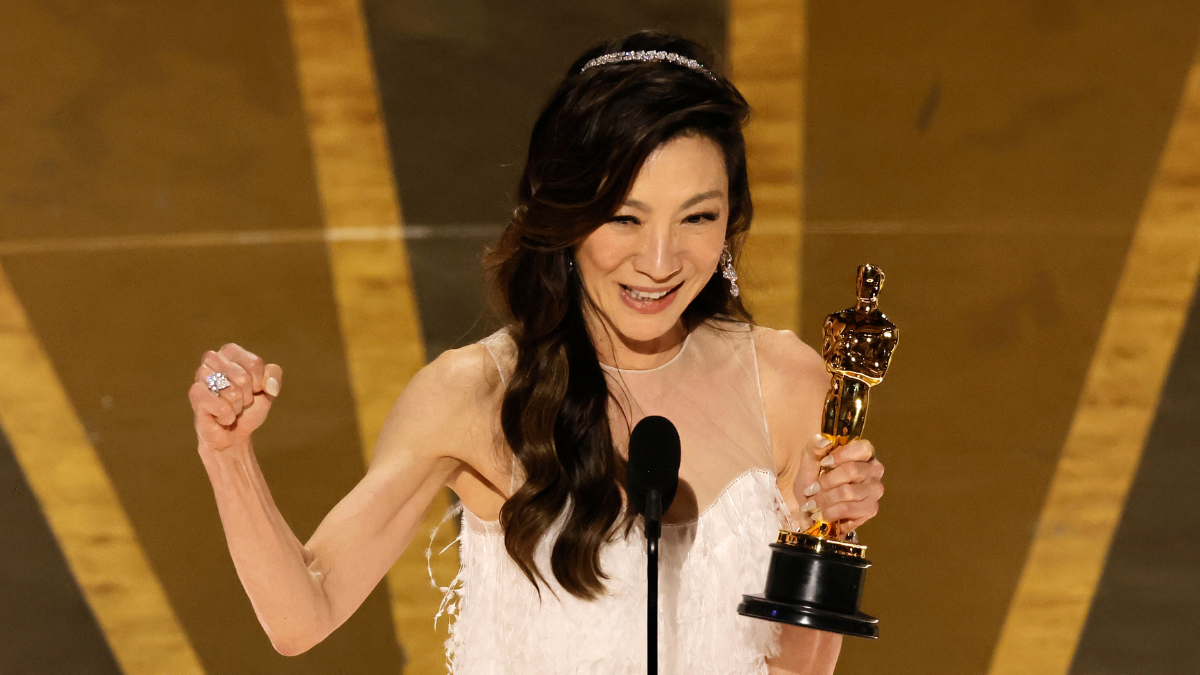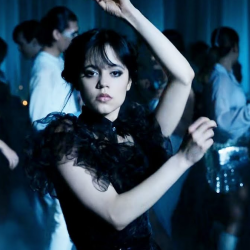We’ve seen many entertaining viral moments over awards season this year. Highlights include Amelia Dimoldenberg’s flirtatious Andrew Garfield interview at the Golden Globes and, of course, Jamie Lee Curtis getting her face stroked by sausage fingers on the BAFTAs red carpet.
The Oscars ended the season with some memorable moments, most significantly Michelle Yeoh making history as the first Asian to win the Academy Award for Best Actress. The result was a bump in the ratings with audience figures improving 12% on 2022, although that only takes it to its third worst performance ever.
Compared with the ‘slap‘ fallout last year, the Academy will look on the night as a success. But the Oscars still struggles to find ways for such an elite event to engage audiences at home.
At many awards ceremonies, the red carpet has become a key opportunity to get fans closer to the action, but this year, the traditional red was replaced by beige (described as ‘champagne’ by the Academy organisers), and it became covered in mud as the stars and press paraded all over it.
The real problem with the carpet, however, wasn’t the dull colour but the opportunity missed: the only truly viral moment this year was Hugh Grant’s painfully awkward interview.
It’s time for the Oscars to rethink the carpet, so that it stops being a way of distancing the stars from fans and instead becomes a new way to connect. In the golden age of Hollywood, being a star was all about glamour, mystery and aspiration, but now, to make an impact and win over audiences, stars have to be more open and approachable.
When YouTuber MrBeast challenged Dwayne ‘The Rock‘ Johnson to a red carpet game of rock paper scissors at the premier for ‘Black Adam‘, the resulting film got 262 million views. It worked because it combined a classic MrBeast challenge format with The Rock’s playful personality.
Likewise, Amelia Dimoldenberg’s interview with Andrew Garfield at the Golden Globes was perfectly in sync with Amelia’s trademark awkward-but-funny style, which she uses to great effect on her Chicken Shop Dates YouTube channel. The performance won her a gig as Vanity Fair’s official Oscars Party interviewer, where she went on to give Paul Mescal the same treatment.
At The BRIT Awards, where S:E Creative Studio are the digital agency, rapper Aitch’s red carpet game of ‘say it or shot it’ with KISS FM worked because it played right into his playful and accessible image. In a similar fashion, our red carpet show presented by Nella Rose and Michelle Visage created fun and memorable moments.
The key is always to stage a moment that creates surprise while fitting naturally into its environment.
This is exactly where the infamous mani-cam fell down. It was a red carpet installation that closed in on celebrities’ hands to examine their nails and jewels, and it got a lot of pushback from stars including Jennifer Aniston and Julianne Moore. It felt intrusive and forced — not to mention rather out-of-touch.
Cole Walliser’s GLAMbot, by contrast, has seen success not only for creating impressive imagery in a super sharable format, but for giving celebs from Billie Eilish to Jamie Lee Curtis a chance to shine. The camera is always flattering, and Walliser’s infectiously enthusiastic personality combines reverence with humour.
It’s time for awards shows to up their level of celeb-tainment. When fans can watch their favourite celebs doing all manner of things — from Florence Pugh playing with puppies to Pedro Pascal eating hot wings — there’s really no excuse for getting stuck in the past.
In other words, it’s time to give the classic red carpet a new lick of paint. Just so long as it’s not beige this time.
Featured image: Michelle Yeoh / Deadline




























